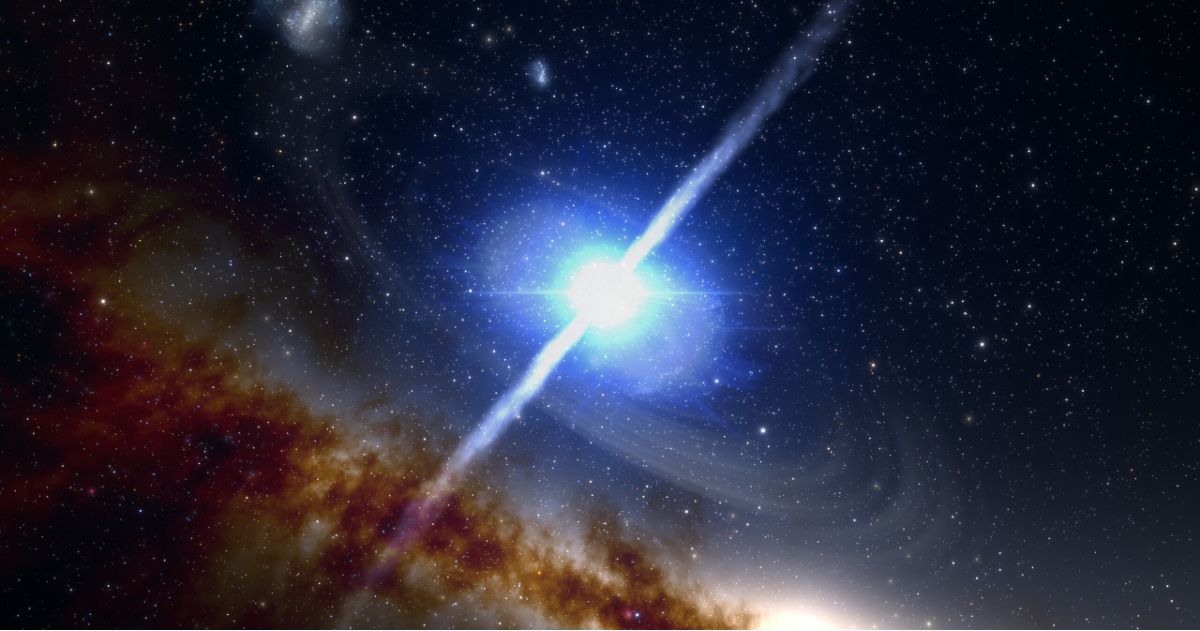
It’s amazing to me that while we’re living this life here on earth, a bunch of other lives and stars are exploding in space, colliding and making new things, and sometimes we don’t even know that it’s happened for millions of years.
That’s the case with these two neutron-dense stars, whose collision resulted in pure, beautiful gold.
The James Webb Space Telescope observed the super-long gamma-ray burst (GRB) that occured during the collision, and also detected the resulting pure gold.
Neutron stars sometimes (but rarely) result from supernovas, or the explosions that come with dying stars that don’t turn into black holes.
The stars are small and dense, so when they run into each other, big things do tend to happen. Scientists from the University of Rome spotted the bright shine of the silver and gold (a kilonova) created by the merger.
Eleonora Troja, an astrophysicist at the University, spoke about the event.
“It was thrilling to study a kilonova as we had never seen before using the powerful eyes of Hubble and JWST. This is the first time we’ve been able to verify that metals heavier than iron and silver were freshly made in front of us.”
Usually, long gamma ray buses are associated with the death of a single star and not the merger of two, but this observation is challenging that notion.
The scientists who published this new research believe that when neutron stars exist in binary pairs, their collision appears to contribute iron, silver, and gold elemental building blocks.
“Neutron star mergers could give rise to an ideal environment to extensively synthesize heavy elements, which is currently beyond artificial creation. Studying neutron star mergers helps us rewrite the obscure chapters of nucleosynthesis.”
That is the scientific term for the formation of new atomic nuclei as it occurred immediately following the Big Bang.
So, it’s not just about the gold.
This collision could also shed light on how the entire Universe was formed in the first place.
If you think that’s impressive, check out this story about a “goldmine” of lithium that was found in the U.S. that could completely change the EV battery game.